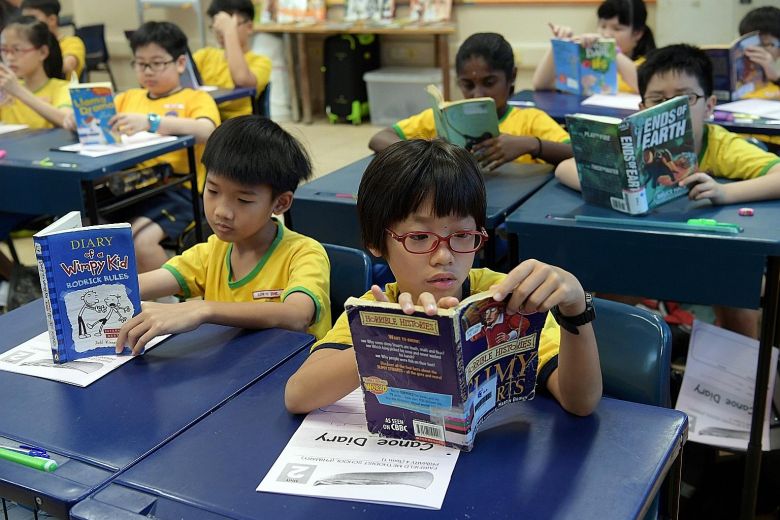Primary 4 pupils in Singapore have emerged second in an international test that measured how well they can read, out of 58 territories.
The results of the Progress in International Reading Literacy Study (PIRLS), released last month, also found that pupils here outperformed their peers in other countries in navigating online texts.
Singapore pupils came up tops – surpassing 13 other territories and countries, including the United States – in the online task, which required them to answer questions related to information on the Web.
This is the first time the study – which has been conducted every five years since 2001 – has included a section to assess how pupils understand online information, to capture the changing nature of how young people consume information in a digital age.
About 6,500 pupils from all 177 primary schools here took the test in 2016. More than 319,000 pupils worldwide took part.
Russia was top out of 58 education systems in this round, while Hong Kong was third, Ireland fourth and Finland fifth.
Singapore was fourth out of 45 education systems previously in 2011.
The test, sponsored by the International Association for the Evaluation of Educational Achievement, evaluated pupils’ reading and comprehension skills, such as connecting pieces of information, and making inferences from texts. Pupils were given two reading passages – narrative fiction as well as information-based texts such as news articles – and had to answer multiple-choice and written-response questions.
More than a quarter – 29 per cent – of Singapore pupils achieved the “advanced” benchmark, which is the highest level of attainment in the 2016 study, similar to 2011’s results. The international proportion of such pupils was only 10 per cent.
The Ministry of Education (MOE) attributed Singapore’s improvement to changes in the way the English language has been taught in schools in the past decade, such as the introduction of the Strategies for English Language Learning and Reading (Stellar).
Under Stellar, grammar and vocabulary are taught through children’s stories and texts, instead of textbooks and worksheets.
Mr Sng Chern Wei, MOE’s deputy director-general of education (curriculum), said: “We are heartened that the curricular strategies – such as Stellar – which are engaging and factor in our local diverse context, have shown success.”
Weaker pupils showed a marked improvement as well.
Only 3 per cent of pupils performed below the “low” benchmark in reading in 2016, compared with 14 per cent across all participating education systems.
In 2011, Singapore’s proportion of such pupils was also 3 per cent, but the figure was 10 per cent in 2001.
Ms Sofia Gita Parkash, head of the English language department at Fairfield Methodist Primary School, said it pairs upper primary pupils with younger ones to help them with reading. Pupils are also selected to host school visitors and write articles.
“We want pupils to learn how to greet people, how to code switch, how to react to different situations, cultures and contexts,” she said.
The PIRLS report also found that children whose parents engaged them in activities such as reading or talking from a young age, or sang to them, did better than those who did not get the same level of exposure.
Primary 6 pupil Nathaniel Tan, 11, whose father, a 44-year-old manager in a telecommunications company, has read to him daily since he was young, said: “Whenever I have free time, I will read.”
Ms Kam Sook Wei, 35, has also exposed her Primary 2 daughter and Kindergarten 2 son to a daily routine of reading from as young as four months old. “I read to them every night, whether or not they were listening,” said Ms Kam, who runs her own business. “In the car, I also play audio books and turn on the BBC.”
Article & Photo from Straits Times


